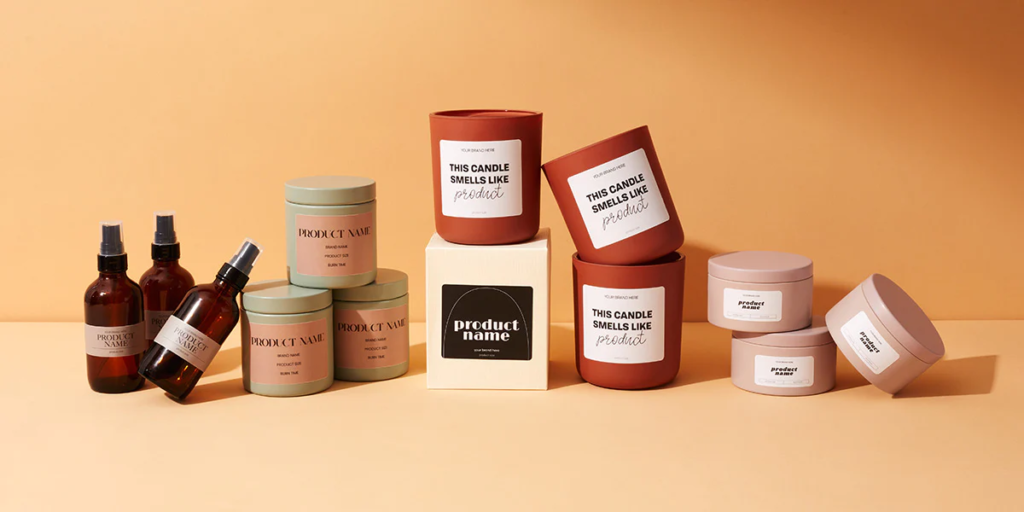
Product labels are more than just stickers on packaging; they’re powerful branding tools that communicate information, create visual appeal, and leave a lasting impression on consumers. While the finished product looks good, where do you start?
Whether you’re a startup launching your first product or an established business looking to revamp your branding, getting started with product labels requires careful planning and attention to detail. This article will guide you through the essential steps to kickstart your journey into the world of product labels.
Let’s get started!
1. Define Your Brand Identity
Before you even begin designing your product labels, it’s crucial to have a clear understanding of your brand identity. What values does your brand represent? Who is your target audience? What emotions do you want your brand to evoke? These foundational questions will shape the design, color palette, and messaging of your labels. As you proceed, choosing the right Sticker Manufacturer becomes essential. Not only should they be able to reflect the quality and ethos of your brand in their craftsmanship, but also provide guidance and options that enhance your product’s appeal.
2. Determine Label Information
Next, outline the information that must be included on your labels. This could range from basic product details like the product name and size to more specific information like ingredients, usage instructions, and safety warnings. Understanding what information is required will help you create a label design that is both informative and visually appealing.
3. Select Label Material
Choose the right label material that aligns with your product’s packaging and characteristics. Consider factors such as the material’s durability, resistance to elements (like moisture or oil), and compatibility with your chosen printing technique.
Common label materials include paper, film, clear, and foil. Each material offers different benefits in terms of appearance, texture, and functionality. For instance, paper labels might be suitable for dry goods, while film labels could be better for products that require moisture resistance.
4. Choose Label Shape and Size
The shape and size of your label should complement your product’s packaging and design. Consider the available space on your packaging and the visual impact you want to create. Labels come in various shapes, including rectangles, squares, circles, and custom die-cut shapes. The size you choose should allow for all necessary information to be legible while still leaving room for design elements.
5. Design Your Labels
Designing your labels is where creativity comes into play. Your label design should reflect your brand identity, convey your message, and engage your target audience. Pay attention to color choices, typography, imagery, and any additional design elements that align with your brand.
Consider the emotions and associations different colors evoke, and choose typography that is easy to read while maintaining your brand’s aesthetic. Visual elements should not only look appealing but also reinforce your brand’s story and values.
Tip: Contact Prepress experts for this step, not just graphic designers—they will make sure what you see on screen will be the same as what you receive on print.
6. Incorporate Regulatory Information
Depending on your product’s industry and location, there may be specific regulatory requirements for labeling. Ensure that your labels include all necessary legal information, such as ingredient lists, nutritional facts, allergen warnings, and safety instructions. Compliance with these regulations is essential to avoid legal issues and build trust with consumers.
7. Select Printing Technique
Choosing the right printing technique is crucial for achieving the desired quality and appearance of your labels. Some common printing techniques include digital printing, flexographic printing, and offset printing. Factors such as budget, design complexity, and quantity of labels needed will influence your choice of printing technique.
8. Test and Review
Before printing a large batch of labels, it’s wise to test a few samples to ensure they meet your expectations. Check for color accuracy, print quality, and legibility of text. Review the labels for any errors or inconsistencies and make any necessary adjustments before proceeding with full-scale production.
9. Consider Sustainability
In today’s eco-conscious world, sustainability is a significant consideration for many consumers. Explore label materials that align with your brand’s commitment to environmental responsibility. Biodegradable or recyclable label materials can resonate with consumers who value sustainability.
10. Seek Professional Help
If designing labels seems overwhelming or outside your expertise, consider working with a professional designer or a label manufacturer that offers design services.
Professionals can help you create labels that are not only visually appealing but also optimized for print quality and compliance. They will also have the most competitive quote since they will be equipped with many print competencies.
11. Evaluate Packaging Compatibility
Once your labels are designed and ready, consider how they will interact with your product’s packaging. Ensure that the adhesive is suitable for your packaging material, and test how the labels adhere and withstand various conditions, including storage and transportation.
12. Plan for Application
Think about how your labels will be applied to your products. Will it be done by hand or by machinery? Consider the practicality of applying labels efficiently and consistently, especially if you’re dealing with a large volume of products.
Conclusion
Getting started with product labels involves a thoughtful and strategic approach.
From defining your brand identity to selecting label materials, designing, and testing, each step plays a crucial role in creating labels that effectively represent your brand and resonate with your target audience.
By carefully considering all aspects of label design, production, and application, you’ll be well on your way to enhancing your products’ visual appeal, communicating information clearly, and leaving a positive and lasting impression on your customers.